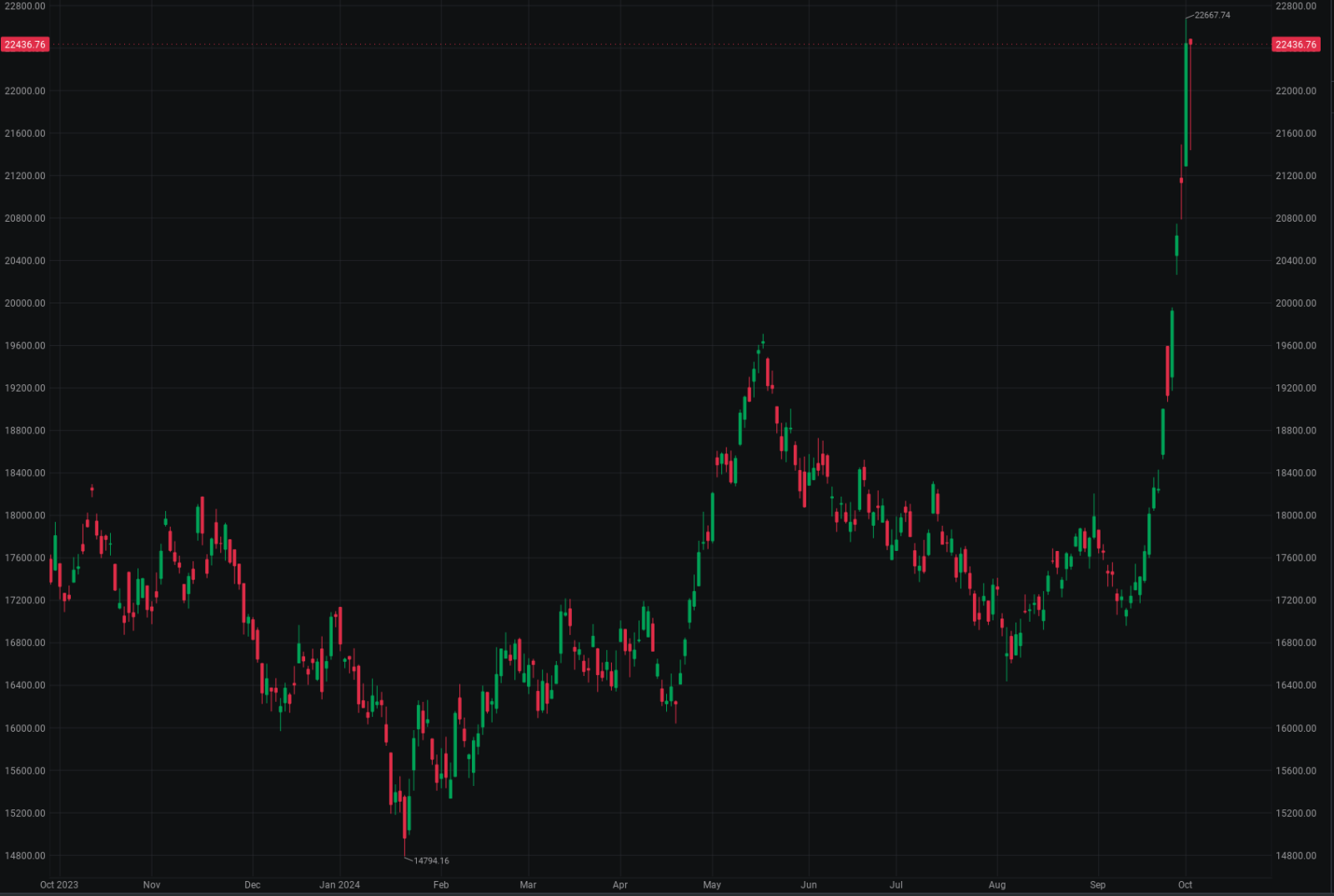Expect a lot more from this China rally
Authorities in China launched a broad stimulus package last week in a bid to stabilise property markets and ease any deflationary pressures.
These monetary and fiscal measures are the largest economic support package in China in more than three years. The market impact was immediate, but Middle East conflict and this week’s holiday in China may mean markets have not fully priced the economic support.
The Chinese government’s program is far-reaching, containing at least 33 adjustments: wholesale interest rates were lowered, liquidity increased, borrowing costs for property were lowered and borrowing requirements eased. All of this is to stabilise property and sharemarkets, and achieve the 5% annual growth target.
The moves in major global indices with exposure to China were almost immediate. The Shanghai and Shenzen exchanges surged, as did Hong Kong’s Hang Seng index. The chart below shows the effects of the announcements that began two weeks ago.
Hang Seng Index (daily)

From the September low, the HSI is up more than 5700 points, or 33.6%. This is an extraordinary move for any index, let alone one of the most important markets globally. It’s critical to note that while most China sharemarkets are closed for the week-long National Day holiday, Hong Kong has resumed trading after a one day break, while most other markets in China remain closed until next week.
The support for one of the world’s largest economies is important for many markets outside China as well. Key commodity markets have turned, and global mining stocks are finding new support. China-consumer focused businesses that are listed on US exchanges, such as Alibaba ($BABA), PDD Holdings ($PDD) and Baidu ($BIDU), have led over the last two weeks.
However the important moves in China were pushed out of the news cycle by concerning developments in the Middle East and domestic political considerations in the US. This could mean that markets are yet to fully reflect the significance of this fresh impetus.
One factor that may keep investors focused on China markets broadly, and Hong Kong in particular, is the relatively low international support for these market previously. After the post pandemic highs of early 2021, the Hang Seng Index underperformed.
Hang Seng Index (weekly)

The significance of the moves in the past two weeks (far right of the chart) is glaring. Also, the moves so far only bring the index back to the 2023 high point. Despite the recent strength, the market is still well below the 2021 top, and the 2018 all-time high at 33,484.
This sharp move higher has driven volatility higher as well. Short-term historical volatility spiked from 14% to 33%, the sort of increase normally associated with falling markets. This increase in a key risk measure demands respect from investors and traders alike. The history-making nature of these stimulus measures and the following market moves pose the question; are these temporary and short-lived effects, or is this the beginning of something bigger?
Disclaimer: Community is offered by Moomoo Technologies Inc. and is for educational purposes only.
Read more
Comment
Sign in to post a comment

Dooomer :
Ganninamoo : definitely just the start of the Chinese comeback , most a shares only resume next week
Nicholas Low : Yes expect a lot of decline